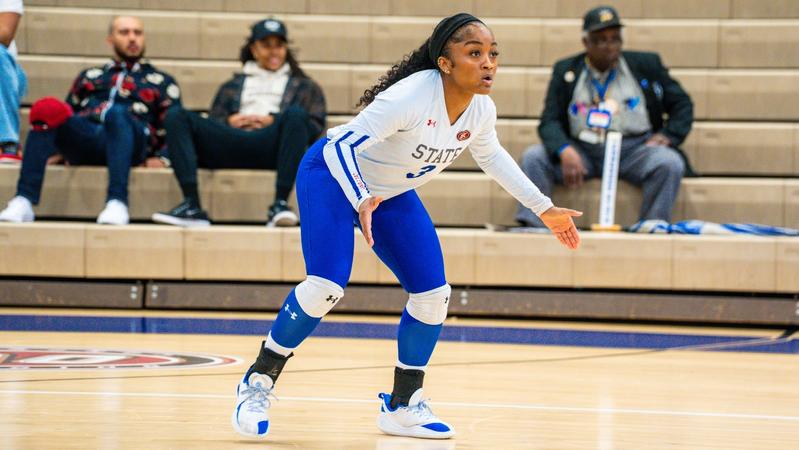NIL
Understanding North Carolina's new NIL law on public records, athlete contracts, and agent …
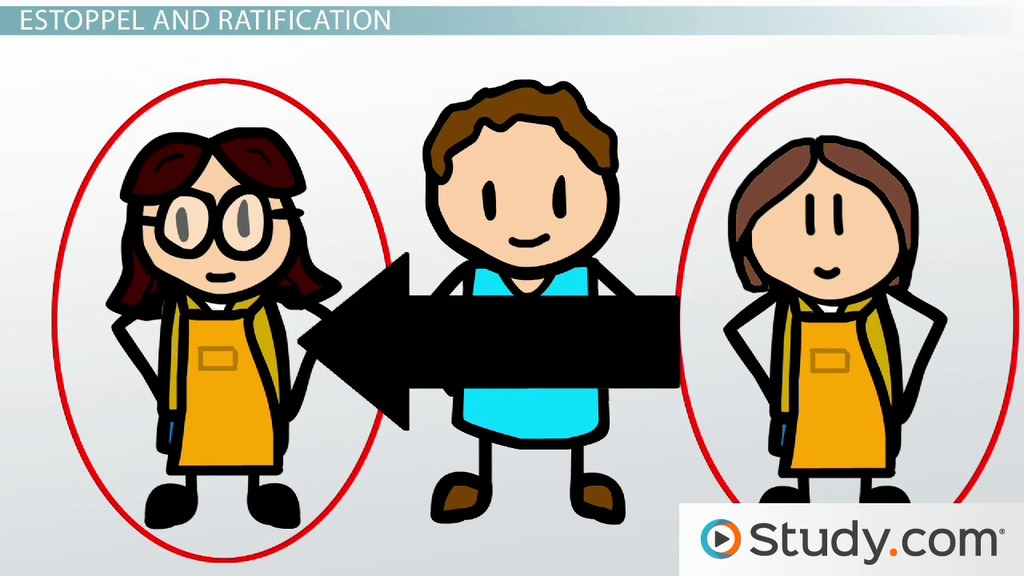

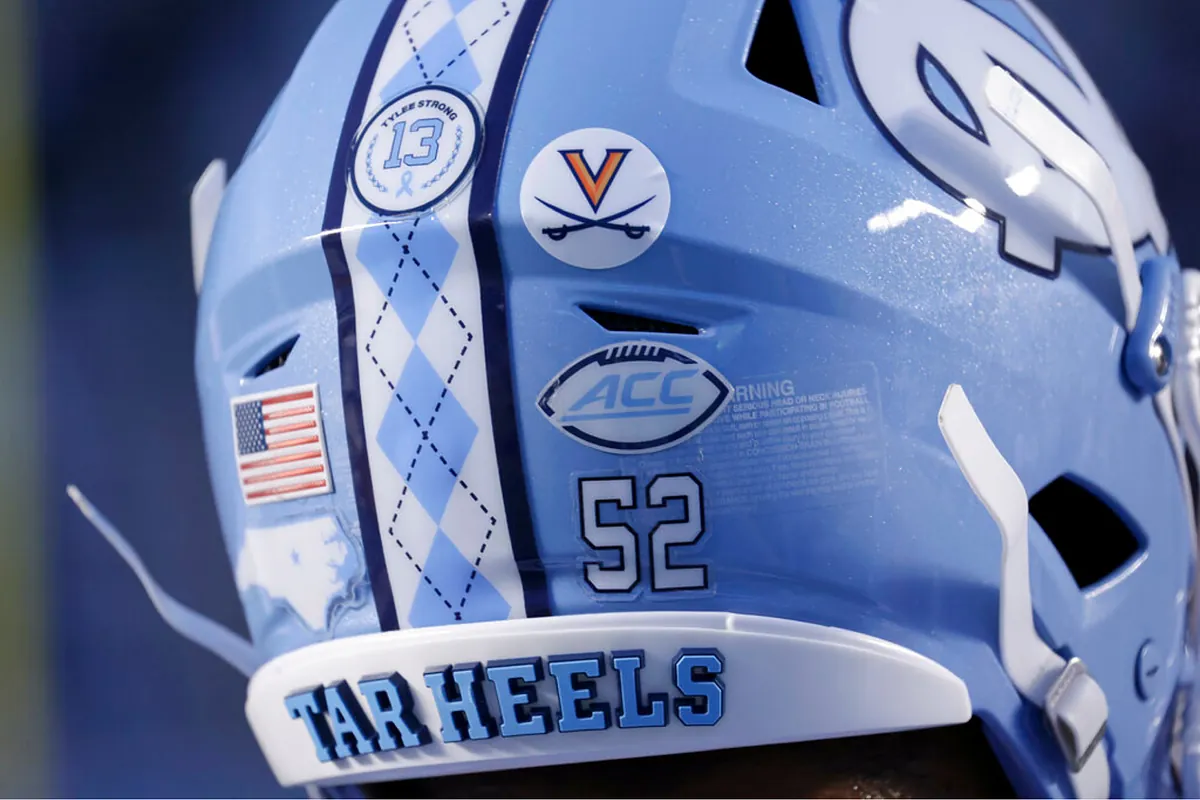
The new NIL law-relating to name, image, and likeness-has been passed, allowing college athletes to receive compensation for the use of what is described under the statute.
On July 2, sports attorney Darren Heitner shared on X: “North Carolina’s governor has signed a bill into law that includes a public records exemption for #NIL contracts.”
“Tiger Mom” Erupts in LSU Fan Brawl While Coastal Coaches Ejected in CWS Chaos
A newly added provision in General Statute 132-1.2 formalized a significant change. Specifically, Part VIII of the bill introduces a “Public Records Exemption for Certain Name, Image, and Likeness Contracts,” meaning certain NIL agreements are now officially protected from public disclosure.
Under the confidential information section, the law states: “Nothing in this Chapter shall be construed to require it authorize a public agency or its subdivision to disclose any information that: Reveals records related to a student athlete’s name, image, and likeness contract.” This change means that the public, the media, and even oversight agencies will no longer have access to information on how NIL funds are managed or distributed at state-funded institutions.
What is even more surprising is that the exemption applies retroactively. Lawmakers inserted this modification just two months after the bill was initially introduced-catching even legal experts off guard. David McKenzie, a local attorney who specializes in First Amendment and Intellectual Property law, did not hold back in sharing his perspective: “It’s a way to erode the public records law to death,” he told a local newspaper.
His primary concern lies in the inconsistency: while coaching salaries and compensation for other state employees remain public, NIL earnings-often backed by donors or university collectives-now vanish into an informational “black hole.” McKenzie added, “I don’t think this is a situation where FERPA [Family Educational Rights and Privacy Act] applies.”
Further pressing the issue, McKenzie said: “It was tacked on at the last minute [and] public resources, in the form of taxpayer money, are going to find these NIL deals, either directly or indirectly.” He argued that people need access to information on agreements worth millions of dollars. The law passed unanimously in the state House, with 111 votes in favor and zero against.
It’s now crucial that athletes fully understand what they are signing. In a follow-up post, Darren Heitner added: “North Carolina is now also 1 of the few states to update its sports agent law to account for #NIL’s role in college athletics. It distinguishes a pro sports services agency contract from an NIL agency contract and requires different language in each agreement.”
According to the bill, professional sports agency contracts must include the following warnings:
- You shall lose your eligibility to compete as a student-athlete in your sport;
- If you have an athletic director, within 72 hours after entering into this contract, both you and your athlete agent must notify your athletic director;
- You waive your attorney-client privilege with respect to this contract and certain information related to it; and
- You may cancel this contract within 14 days after signing it, cancellation of this contract shall not reinstate your eligibility.
An NIL agency contract must also state: “Entering into an NIL contract that conflicts with State law or your institution’s policies may have negative consequences, such as loss of athletic eligibility. You may cancel this NIL agency contract within 14 days after signing it.”
As for agents, they are now required to:
- Alert a student-athlete’s AD before the next game or within 72 hours of any deal;
- Avoid giving gifts or misleading prospects;
- Maintain five years of detailed records: names, addresses, contracts, and costs.
Everyone involved must now be prepared, with documentation in hand should it be required. Agents will face greater scrutiny, and athletes will find themselves in the middle. Who really stands to benefit from this law remains to be seen.
NIL
College football transfer portal tracker: Trinidad Chambliss returning to Ole Miss if granted waiver

After a year at Wisconsin, Billy Edwards is heading back east.
The former Badger and Maryland Terrapin is signing with North Carolina. Edwards was Wisconsin’s Week 1 starter in 2025 but suffered a knee injury in the opener and made just one more appearance the rest of the season.
In 2024, Edwards was 273-of-420 passing for 2,881 yards, 15 TDs and nine interceptions.
Belichick and UNC added former South Alabama QB Gio Lopez via the transfer portal in the spring and, with Lopez expected to stay in Chapel Hill, he’ll compete with Edwards for the starting job.
NIL
Florida football transfer tracker as UF builds roster under Jon Sumrall
Updated Jan. 4, 2026, 8:04 p.m. ET
The Florida football 2025 roster remains a work in progress.
Coming off a 4-8 season, changes are in store as the Florida Gators enter a new era under first-year coach Jon Sumrall.
Already, more than 20 Florida players have announced their intentions to enter the portal, including starting quarterback DJ Lagway, starting wide receiver Eugene Wilson III, starting tight end Hayden Hansen, starting safety Jordan Castell and starting defensive tackle Michai Boireau.
The FBS transfer portal opened Friday, January 2, and runs through Friday, January 16, a window in which players can officially be in contact with other schools. Florida players who are in the portal can re-sign with UF during that time or choose to sign with other schools.
Florida will likely be in the market for at least one more quarterback, along with help to fill holes on the offensive and defensive lines, at punter and kicker and in the secondary.
Transfer players Florida football is eyeing or has added from the portal
Baylor DB DJ Coleman
Coleman committed to Florida after his weekend visit on Sunday, January 4. A junior, the 6-1, 210-pound Coleman has posted 89 total tackles, 8 tackles for loss, 2 interceptions, 9 pass breakups, and one forced fumble in three seasons at Baylor.
Georgia Tech QB Aaron Philo
Philo is expected to commit to Florida after a weekend visit, according to multiple reports. He announced his intentions to enter the transfer portal on December 17 and has a connection with new UF offensive coordinator Buster Faulkner, having played under Faulkner for two seasons with the Yellow Jackets. The 6-foot-2, 220-pound Philo has thrown for 938 yards with 2 TDs to 3 interceptions over two seasons while rushing for 95 yards and 1 TD as the backup to starting Georgia Tech quarterback Haynes King. Philo plans to visit Florida this weekend according to Tyler Harden of 247Sports.
Georgia Tech WR Bailey Stockton
The 5-11, 185-pound Stockton plans to visit Florida this weekend with Georgia Tech teammate Aaron Philo, according to Tyler Harden of 247Sports. A sophomore, Stockton had 21 catches for 233 yards and 0 TDs last season.
Penn State OT Eagan Boyer
Florida is hosting Boyer on an official visit, according to Alan Trieu of 247Sports. The 6-foot-8, 300-pound Boyer appeared in eight games for the Nittany Lions in 2025, making one start. A redshirt freshman, Boyer has three years of eligibility remaining and has a connection with new UF offensive line coach Phil Trautwein, who coached at Penn State.
Penn State OL T.J. Shanahan Jr.
Shanahan is expected to visit Florida this weekend, according to a report from Tyler Harden of 247Sports. A redshirt sophomore with two years of eligibility remaining, the 6-4, 316-pound Shanahan began his career at Texas A&M before transferring to Penn State. An Orlando native, Shanahan was coached last season by former PSU and current Florida offensive line coach Phil Trautwein.
James Madison TE Lacota Dippre
Florida is hosting Dippre on an official visit on Saturday, Jan. 3, according to a report from 247Sports. A redshirt sophomore with three years of eligibility remaining, the 6-4, 253-pound Dippre had 17 catches for 192 yards and 3 TDs with JMU in 2025.
Georgia Tech C Harrison Moore
Moore entered the transfer portal on Saturday, January 3 and is considered a Florida target based on his relationship with new UF offensive coordinator Buster Faulkner. A sophomore, the 6-5, 300-pound Moore started eight games for the Yellow Jackets last season and hasn’t allowed a sack in 866 career snaps
Kentucky S Cam Dooley
The 6-2, 208-pound Dooley entered the transfer portal on Sunday, January 4. A sophomore with two seasons of eligibility remaining, Dooley appeared in 12 games with three starts for the Wildcats in 2025, recording 20 tackles, 1 forced fumble and 1 interception. He’s considered a Florida target based on his relationship with former UK turned Florida defensive coordinator Brad White and former UK turned Florida safeties coach Chris Collins.
Jacksonville State DE Emmanuel Oyebadejo
The 6-7, 295-pound Oyebadejo is set to visit UF’s campus this weekend, according to 247Sports. A redshirt junior, Oyebadejo posted 6.5 tackles for loss, 4.5 sacks and 2 forced fumbles for Jacksonville State in 2025.
New Mexico TE Dorian Thomas
The 6-foot-4, 239-pound Thomas is expected to visit UF’s campus, according to a report from Matt Zenitz of CBS Sports. A sophomore, Thomas finished the 2025 season with 56 catches for 560 yards and 4 TDs. He’s rated as the number two tight end in the 2026 transfer portal class by various recruiting websites.
Baylor DT DK Kalu
The 6-4, 309-pound Kalu is expected to visit UF’s campus this weekend, per a report from On3’s Corey Bender. A redshirt freshman, Kalu has appeared in three games and made one career start in two seasons at Baylor, recording a tackle against Air Force.
Cincinnati RB Evan Pryor
The 5-9, 195-pound Pryor is set to visit UF’s campus on Monday, per multiple reports. Pryor, a redshirt junior, rushed for 522 yards on 6.9 yards per carry with 3 TDs for the Bearcats last season.
Miami (Ohio) LB/DE Adam Trick
The 6-4, 242-pound Trick is set to visit Florida on Sunday, January 4, per a report from 247Sports. Trick posted 25 tackles, 8.5 sacks, 3 forced fumbles and an interception for the Red Hawks in 2025.
Wake Forest WR Micah Mays Jr.
The 6-2, 196-pound Mays is set to visit Florida this weekend, according to multiple reports. A former four-star recruit from The Benjiman School in North Palm Beach, Mays has recorded 34 catches for 520 yards and 4 TDs in two seasons with the Demon Deacons. A sophomore, Mays has two years of eligibility remaining.
Florida football players who have announced their return to UF for 2026
Florida football QB Tramell Jones Jr.
Jones announced his intentions to return to UF in a social media post on December 30. The 6-foot-0, 203-pound Jones appeared in two games for UF, completing 21 of 35 passes for 191 yards and 2 TDs. Jones will enter 2026 as a redshirt freshman with four years of eligibility remaining.
Florida football WR Dallas Wilson
Wilson announced his intentions to return in a social media post on December 31, citing a “revenge season.” In four games, the 6-2, 213-pound Wilson recorded 12 catches for 174 yards and 3 TDs in a season that was cut short due to a broken foot.
Florida football WR Vernell Brown III
Brown announced his intentions to return for his sophomore season in a social media post on December 26. The 5-foot-11, 178-pound Brown appeared in 10 games with six starts as a true freshman in 2025, earning freshman All-SEC honors with a team-high 40 receptions for 512 yards. Brown also proved valuable on special teams, adding 261 yards on punt and kickoff returns with a punt return long of 40 yards.
Florida football LB Myles Graham
Graham was one of the first UF players to announce his intentions to come back to Florida Victorious on Dec. 16. The 6-1, 228-pound Graham led UF in tackles (76) and tackles for loss (7) in 2025.
Florida football DB Cormani McClain
McClain announced his intentions to return to UF in a social media post on December 31. A redshirt sophomore and former 5-star recruit from Lakeland who transferred in from Colorado, McClain has recorded two career interceptions at UF, including one returned for a TD.
Florida football EDGE LJ McCray
McCray announced his intentions to return to UF to Florida Victorious on December 30. The 6-foot-6, 268-pound McCray, a former five-star recruit from Mainland High in Daytona Beach, appeared in just one game in 2025 before being sidelined with a broken foot. In 14 career games, McCray has recorded six quarterback hurries and half a sack. McCray will enter the 2026 season as a redshirt sophomore with three years of eligibility remaining.
Florida football LB Aaron Chiles
Chiles announced his intentions to return to Florida in a social media post on December 24. The 6-foot-3, 244-pound Chiles appeared in 25 games over two seasons with 3.5 career tackles for loss and 1.5 sacks. A sophomore and former Under Armour All-American, Chiles has two years of eligibility remaining.
Florida football DB Dijon Johnson
Johnson announced his decision to return to UF in a social media post on December 24. The 6-1 204-pound Johnson has made nine career starts over three seasons with three career pass breakups and one interception. A redshirt sophomore, Johnson has two years of eligibility remaining.
Florida football EDGE Kam James
James announced his decision to return to UF in a social media post on December 30. A junior with one year of eligibility remaining, the 6-6, 270-pound James has posted 7.5 career tackles for loss and 4.5 career sacks.
Florida football S Bryce Thornton
Thornton announced his intentions to return in a social media post on December 31. A junior, the 5-10, 213-pound Thornton has started 22 games over three seasons, recording four career interceptions and a fumble recovery returned for a TD.
Florida football LB Jaden Robinson
Robinson announced his intentions to return to UF in a social media post on January 1. A junior from Lake City, the 6-0, 226-pound Robinson has started 17 games over three seasons, recording 7.5 career tackles for loss and 5.5 career sacks.
Florida football OL Knijeah Harris
Harris has re-singed with Florida, according to a report from On3’s Pete Nakos. A junior, the 6-3, 313-pound Harris has started UF’s last 25 games at left guard. In 2025, Harris posted Pro Football Focus (PFF) pass blocking grade of 74.2 in 25 starts.
Florida football OL Roderick Kearney
Kearney announced his decision to return in a social media post on December 26. A former Under Armour All-American, the 6-foot-4, 310-pound Kearney appeared in seven games on offense and special teams last season. A redshirt sophomore, Kearney has two years of eligibility remaining and will have an opportunity to compete for the starting job at right guard vacated due to the departure of three-year starter Damieon George Jr.
Florida football WR TJ Abrams
Abrams announced his decision to return to Florida in a social media post on December 18. A redshirt freshman from Fort Myers, the 5-foot-10, 196-pound Abrams appeared in 10 games with one start in 2025, catching 13 passes for 201 yards.
Florida football DT Joseph Mbatchou
Mbatchou signed an NIL deal to return to Florida on December 24. As a true freshman last season, the 6-5, 300-pound Mbatchou appeared in eight games, making 11 tackles, including one tackle for loss.
Florida football OT Caden Jones
Jones signed an NIL deal to return to Florida on December 31. The 6-8, 333-pound Jones started 10 games at right tackle for the Gators in 2025.
Florida football players who have entered the transfer portal
Florida football DB Aaron Gates
In three seasons, Gates appeared in 18 games and recorded 34 tackles, four tackles for loss, four pass deflections, three fumble recoveries and an interception. The redshirt sophomore had a promising 2024 season, but suffered a season-ending shoulder injury against Miami this year.
Florida football EDGE Jayden Woods
Jayden Woods, the true freshman edge rusher, who earned All-Freshman SEC honors, plans to enter the portal, according to a report by On3sports. The 6-foot-3, 248-pounder appeared in all 12 games for Florida this season, which featured him totaling 28 tackles, five tackles for loss, 2.5 sacks and one interception. Woods, who has three years of eligibility remaining, was the first Gator true freshman to lead or co-lead in sacks since 1992.
Florida football DB Sharif Denson
The 5-foot-11, 195-pound Denson announced his intentions to enter the transfer portal in a social media post on Friday, December 26. A former Under Armour All-American from Bartram Trail High in Jacksonville, Denson made 17 starts in 36 games over three seasons at UF, recording 97 tackles, 6.5 tackles for loss, 2 sacks and 1 interception. A junior, Denson has one year of eligibility remaining. Denson announced his commitment to Ole Miss on Sunday, January 4.
Florida football WR Eugene Wilson III
The 5-10, 194-pound Wilson announced his intentions to enter the portal in a social media post on Wednesday, December 24. Wilson finished his UF career with 107 catches for 1,043 yards and 10 TDs. A redshirt sophomore, Wilson has two years of eligibility remaining. Wilson plans to visit Texas A&M and LSU, per a report from 247 Sports.
Florida football WR Naeshaun Montgomery
The 6-1, 189-pound Montgomery plans to enter the portal, according to a report from On3s Pete Nakos. A former Under Armour All-American, Montgomery appeared in four games for UF, making three catches for 26 yards. Montgomery preserved his redshirt by appearing in just four games and has four years of eligibility remaining.
Florida football DT Michai Boireau
The 6-foot-5, 349-pound Boireau announced his intentions to enter the portal in a social media post on Thursday, Dec. 18. Boireau appeared in 21 games with nine starts for UF over two seasons, recording 35 tackles, 2 sacks and a game-winning interception against Mississippi State.
A sophomore, Boireau has two years of eligibility remaining. According to CBS Sport’s Matt Zenitz, Boireau plans to visit Ole Miss, Arkansas, Georgia Tech and Kentucky.
Florida football TE Hayden Hansen
The 6-8, 269-pound Hansen announced his intentions to enter the transfer portal in a social media post on Thursday, Dec. 18,
Hansen made 34 starts over the last three seasons at UF, recording 57 catches for 611 yards and 5 TDs. This past season, Hansen had 30 catches for 254 yards and 2 TDs. A redshirt junior, Hansen has one year of eligibility left. Hansen announced his commitment to Oklahoma on Sunday, January 4.
Florida football LB Grayson ‘Pup’ Howard
The 6-4, 236-pound Howard announced his intentions to transfer in a social media post on Wednesday, Dec. 17. Howard appeared in 12 games over two seasons for UF, totaling 41 tackles, 2 tackles for loss, 2 fumble recoveries and 1 fumble recovery. He started nine games in 2024 but appeared in just three games in 2025 due to an ankle injury. A redshirt junior, Howard has just one year of eligibility remaining.
Florida football WR Tank Hawkins
The 5-10, 178-pound Hawkins announced he’s entering the transfer portal in a social media post on Wednesday, Dec. 17.
Hawkins appeared in 11 games over two seasons for UF, recording 12 catches for 116 yards and 1 TD. He opted out of UF’s final four games of the 2025 season to preserve his redshirt and as a redshirt freshman has three years of eligibility remaining.
Florida football WR Aidan Mizell
Florida redshirt sophomore wide receiver Aidan Mizell announced his intentions to enter the portal in a social media post on Tuesday, Dec. 16.
The 6-2, 185-pound Mizell, from Boone High in Orlando, appeared in 21 games over three seasons with three starts, finishing with 36 catches for 379 yards and 3 TDs. He has two years of eligibility remaining.
Florida football QB DJ Lagway
Lagway announced his intentions to transfer on Monday, Dec. 15, in a social media post. A 2023 Gatorade High School player of the year from Willis High School in Willis, Texas, the 6-3, 247-pound Lagway went 10-9 as a starter for Florida, passed for 4,179 yards over two seasons with 28 TDs to 23 interceptions. Lagway also rushed for 237 yards and 1 TD for UF in two seasons.
A sophomore, Lagway has two seasons of eligibility remaining. Per CBS Sports’s Matt Zenitz, Lagway is expected to visit Baylor, Missouri, Louisville and Virginia.
Florida football S Jordan Castell
Castell announced his intentions to enter the portal in a social media post on Monday, Dec. 15. A three-year starter at safety for UF, the 6-2, 213-pound Castell recorded 168 career tackles, 12 pass breakups, 3 interceptions and 1 sack.
Florida football RB KD Daniels
Daniels announced his intentions to transfer in a social media post on Monday, Dec. 15. A redshirt freshman, the 6-0, 203-pound Daniels rushed for 185 yards on 39 carries with 2 TDs over two seasons at UF.
A former 5A Mississippi Mr. Football from West Point, Mississippi, Daniels has three years of eligibility remaining.
Florida football WR Muizz Tounkara
Tounkara announced his intentions to enter the transfer portal shortly after UF’s season ended on Nov. 29. As a 6-3, 208-pound true freshman receiver from League City, Texas, Tounkara appeared in eight games for UF in 2025, finishing the year with two catches for 12 yards.
Florida football TE Amir Jackson
Florida football tight end Amir Jackson announced his intentions to enter the transfer portal, according to a social media post. A redshirt freshman, the 6-5, 235-pound Jackson appeared in 12 games for UF in 2025, finishing with three catches for 29 yards and a TD. He has three years of eligibility left. According to reports, Jackson was expected to re-sign with UF once the portal opens.
Florida football DL Tarvorise Brown
A JUCO transfer, Brown announced his intentions to enter the transfer portal on Dec. 10. The 6-foot-7, 296-pound Brown provided depth on UF’s defensive line over the last two seasons, appearing in six games.
Florida football WR Mike Peterson Jr.
A freshman walk-on and son of UF edge rushers coach Mike Peterson, the 6-1, 164-pound Peterson didn’t appear in any games this season. A three-star recruit, Peterson had 24 catches for 258 yards and 4 TDs at Fort White High during his senior season in 2024.
Florida football S Josiah Davis
Florida football redshirt freshman safety Josiah Davis announced his intentions to enter the portal in a social media post on Monday, Dec. 15.
The 6-0, 200-pound Davis appeared in five games over two seasons on defense and special teams for UF. He has three years of eligibility remaining.
Florida football DB Teddy Foster
The 6-1, 188-pound Foster announced his intentions to transfer in a social media post on Tuesday, Dec. 16. Foster appeared in 11 games on defense and special teams over two seasons at Florida, recording five tackles.
A redshirt freshman, Foster has three years of eligibility remaining.
Florida football OL Marcus Mascoll
The 6-5, 308-pound Mascoll announced his intentions to transfer in a social media post on Wednesday, Dec. 17. Mascoll did not appear in any games over two seasons at Florida. A four-star recruit from Snellville, Ga., Mascoll has three years of eligibility remaining following his redshirt freshman season.
Florida football CB Jamroc Grimlsey
The 6-2, 198-pound Grimsley announced his intentions to enter the portal in a social media post on Wednesday, Dec. 17.
Grimsley appeared in five games over two seasons, making one start and recording one tackle. A redshirt freshman, Grimsley has three years of eligibility remaining.
Florida football WR Jackson Wade
The 5-11, 185-pound Wade, a walk-on and special teams contributor, announced his decision to enter the portal in a social media post on Monday, December 22. Wade appeared in 16 games over two seasons for UF, making one catch for 10 yards. A redshirt sophomore, Wade has two years of eligibility remaining.
Florida football OL Noel Portnjagin
The 6-foot-5, 306-pound Portnjagin, from Karlsruhe, Germany, announced his intentions to enter the transfer portal in a social media post on Tuesday, December 23. A redshirt freshman, Portnjagin appeared in one game in two seasons at UF, playing five snaps in the 2024 Gasparilla Bowl against Tulane. A redshirt freshman, Portnjagin has four years of eligibility remaining.
Florida football K Evan Noel
Noel announced his intentions to enter the transfer portal in a social media post on December 31. Coming out of Bay St. Louis, Miss., with a five-star kicking rating, Noel spent his freshman season in 2025 backing up Trey Smack and did not appear in any games for UF in 2025.
Florida football RB Treyaun Webb
Webb announced his decision to enter the transfer portal in a social media post on December 31. The 5-11, 217-pound Webb has missed most of the last two seasons with a hamstring injury. In 15 career games at UF, Webb rushed for 256 yards on 47 carries with 3 TDs.
Florida football OL Enoch Wagnoy
A former top 50 offensive tackle recruit, the 6-7, 333-pound Wagnoy didn’t appear in a game in two seasons at UF. A redshirt freshman, Wagnoy has three years of eligibility remaining.
Florida football RB Ja’Kobi Jackson
Jackson announced he’s entering the portal after receiving a waiver to play for the 2026 season. In two seasons at UF, Jackson rushed for 618 yards and 7 TDs. He was limited to just four games in 2025 due to injury, rushing for 98 yards on 27 carries.
Florida football P Hayden Craig
Craig has entered the portal, according to a report from 247Sports. As a true freshman last season, Craig backed up Florida starting punter Tommy Doman. A five-star punter per Kohls kicking camp, the 6-1, 208-pound Craig has four years of eligibility remaining.
Florida football LS Mack Mulhern
Mulhern has entered the portal, according to a report from 247Sports. As a true freshman last season, the 6-1, 225-pound Mulhern backed up starting long snapper Rocco Underwood. Rated the number two long snapper in the country as a high school senior by Kohls kicking camp, Mulhern has four years of eligibility remaining.
Kevin Brockway is The Gainesville Sun’s Florida beat writer. Contact him at kbrockway@gannett.com. Follow him on X @KevinBrockwayG1. Read his coverage of the Gators’ national championship basketball season in “CHOMP-IONS!” — a hardcover coffee-table collector’s book from The Sun. Details at Florida.ChampsBook.com
This story was updated with new information
NIL
DawgNation newsletter: Turning the page

Georgia’s premature exit from the College Football Playoff wasn’t the conclusion any of us wanted for the 2025 season. For a third straight year, the Bulldogs will miss the national semifinals.
That qualifies as a bit of a slide for a program that previously won back-to-back national championships.
How does UGA prevent further regression? I think the remaining teams in the College Football Playoff provide clues.
Ole Miss, which beat UGA in the Sugar Bowl, is arguably the SEC’s most aggressive team when it comes to the transfer portal. It’s also been a prodigious NIL fundraiser. Given those facts, it’s probably not a coincidence the Rebels are having their best season in modern history.
Same goes for two of the other remaining CFP teams — Miami and Oregon, each of whom have become well-known in the NIL era for outbidding the competition for top players. Some say they’re trying to buy their way to a championship, but whatever they’re doing is working.
And when it comes to winning national championships, which is always the goal at Georgia, whatever the Bulldogs are doing isn’t working as well as it used to.
Would Kirby Smart consider marshaling the forces around UGA to be as aggressive with NIL and the transfer portal as some of the teams still alive for a national championship? We may be about to find out.
Check out the rest of our coverage below.
Trivia time
How many times has Georgia basketball scored at least 100 points this season?
Answer is at the bottom of the newsletter.
Georgia lands first transfer portal commitment
Georgia has made an addition to the 2026 roster, adding safety Khalil Barnes via the transfer portal.
Barnes took a visit to Georgia on Saturday. He will have one year of eligibility remaining.
The Clemson transfer was a multiyear starter for the Tigers. What’s more, Barnes played at North Oconee High School in Bogart. The Bulldogs have signed wide receiver Landon Roldan and outside linebacker Khamari Brooks in recent classes.
In three seasons at Clemson, Barnes notched 139 tackles, 7 interceptions and 6.5 tackles for loss. Ole Miss was the other program vying to sign Barnes in the transfer portal.
Georgia will see safety JaCorey Thomas move on to the NFL after this season. The Bulldogs also saw safety Kyron Jones miss the final eight games of the 2025 season because of a foot injury.
The Bulldogs bring back sophomore safety KJ Bolden. Georgia signed six defensive backs as a part of the 2026 recruiting cycle, with Jordan Smith, Zech Fort and Blake Stewart projecting as safeties.
Georgia football 2026 roster tracker
Committed from transfer portal
Entered transfer portal
Declared for NFL Draft
Season-long strengths play key role in ending Georgia’s season
From a statistical standpoint, the two things Georgia did best were convert on fourth down and score touchdowns in the red zone. Entering the Ole Miss game, the Bulldogs ranked first nationally in the former category and second in the latter.
But those two areas would go on to play a large role in ending Georgia’s season in the 39-34 loss to the Rebels.
The decision to go for it when facing a fourth-and-2 from its own 33-yard line in the fourth quarter was a disaster.
Center Malachi Toliver snapped the ball after the offense had rushed on the field to replace the Georgia punt team. It was a play that Georgia had run multiple times this season, including successfully against Mississippi State and Texas.
One key difference, though, was that Drew Bobo was the center in those wins. Toliver was starting in place of Bobo after the All-SEC center suffered a foot injury against Georgia Tech.
“The ball was not supposed to be snapped in that situation,” Smart said. “But that was on us as coaches. It was on me and our guys. It’s not on the players. And Gunner (Stockton) and those guys did a nice job executing it. But we did feel like we had lost momentum at that point, and the book says we needed to go for it.
Photo of the day

Georgia quarterback Gunner Stockton (center) passes under pressure from Ole Miss linebacker Princewill Umanmielen. (Mathew Hinton/Associated Press Photo Stream)
Quote of the day
Smart on the Sugar Bowl:
“It was an incredible college football game. It’s what the CFP was built for, to have battles like that.”
Georgia basketball validates hot start with SEC-opening OT win over Auburn
Georgia basketball dunked on its doubters by taking down Auburn 104-100 in overtime Saturday.
The No. 23-ranked Bulldogs improved to 13-1 overall with the win in the SEC opener against a battle-tested Auburn team.
But even more, Georgia validated the up-tempo style coach Mike White has shifted to this season, and the transfer players he brought in to run it.
White, in his fourth season as UGA’s head coach, said as much about a game he said he’ll “remember forever.”
Georgia won’t have to wait long to have a shot at topping it and earning more validation, as a trip to play defending national champion Florida (7 p.m., Tuesday) is on deck.
The Bulldogs will travel to Gainesville with an edge; winning the SEC opener against an Auburn program that had beaten UGA five times in a row and eight of the past 10 carries weight.
Trivia answer
Seven
NIL
How much do college football transfers earn in the NIL and revenue-sharing era?

Since the transfer portal opened last week, there has been plenty of wheeling and dealing between teams and agents.
Now that schools can pay players directly, as a result of the House v. NCAA settlement, general managers work feverishly to manage eight-figure payrolls (in the Power 4, or seven-figure roster budgets at most Group of 5 schools) to construct winning teams. That usually means spending significant money on transfers, who can provide a more immediate impact than a high school recruit. Look at the 2025 Heisman Trophy winner, Indiana quarterback Fernando Mendoza — a transfer from Cal — as a perfect example of why programs mine the portal.
Third-party name, image and likeness (NIL) deals, which were the primary method of compensating players from 2021 through mid-2025, still play a role, especially as the most well-resourced schools push the envelope and send roster budgets skyward, above the $20.5 million cap that was initially established last summer.
But what do transfers cost? Exact compensation numbers are hard to come by because of confidentiality agreements in contracts and schools’ desires to keep them close to the vest for a competitive advantage. To get an idea of what this year’s portal market looks like, The Athletic surveyed industry experts, including general managers, personnel staffers and agents, on the ranges of compensation that transfers receive. All subjects were granted anonymity for their candor.
General managers stress that transfers are more expensive than traditionally recruited and developed players because of the immediate impact they provide. High school recruits typically receive much less compensation, according to a recent survey by The Athletic, and front office staffers say retention is often more cost-effective than going into the portal.
The ranges below represent what teams expect to pay for what they consider good, solid Power 4 starters in the transfer market, but values vary depending on a team’s roster budget, the player’s role, the scarcity of the position in the market and how a team values positions. And there are always outliers on both ends of the spectrum.
Here’s what we learned.
QBs still get the most, and the market may be going up
- QB range: $1 million to $4 million, but potentially higher for the top players
For the most part, Power 4 starting quarterbacks were the highest-paid players on a roster in 2025. In the previous portal cycle, the floor for a Power 4 starter was around $750,000, while the top of the market reached as much as $3.5 million annually, for quarterbacks like Duke’s Darian Mensah and Miami’s Carson Beck. But most of the known 2025 quarterback contract figures ranged from the high six figures to around $2 million. Basically, for $1 million or a little bit more, a team could sign a good, solid Power 4 starting quarterback.
This portal cycle, it appears prices are going up. The floor for a Power 4 starter, in most cases, is $1 million. “If you don’t spend a million, you ain’t getting ’em,” one Power 4 GM said. There will be some exceptions, especially for mid-tier Power 4 programs that don’t go over the cap and sign G5 or FCS transfers. Those players are likely to get upper six figures.
But the top end of the market is growing. The most desirable QBs in the portal, like Cincinnati’s Brendan Sorsby and Arizona State’s Sam Leavitt, are expected to draw offers of $4 million or more. A second Power 4 GM said he suspects offers could reach $5 million for those two. One Power 4 personnel director called the top end of the QB market “insane.”
Drew Mestemaker, the North Texas transfer who led the FBS in passing yardage and committed to Oklahoma State Saturday, is receiving a two-year, $7.5 million contract, according to the Tulsa World. Mestemaker is expected to make $3.5 million in 2026 and $4 million in 2027, according to that report.
Beyond the top five or six quarterbacks in the portal, the next tier figures to fall into a range anywhere from $1.5 million to around $3 million.

Drew Mestemaker committed to Oklahoma State on Sunday and will earn a reported $3.5 million next season. (Danny Wild / Imagn Images)
Offensive tackles and defensive linemen also cost a premium
- OT range: $600,000 to $1.3 million
- Edge rushers: $500,000 to $2 million
- Interior DL: $500,000 to $1.5 million
The positions that protect and affect the quarterback are in the next tier of costs, just like in the NFL.
The men who protect the quarterback are highly valued and their numbers are also going up this portal cycle. A Power 4 GM who is in the market for tackles said that it’s difficult to get a good one for $500,000 and placed the floor around $600,000 to $650,000.
“Good offensive tackles, you’re looking at a minimum of $750,000,” said a Power 4 front office staffer. The top-tier tackles are likely to clear seven figures and approach $1.2 or $1.3 million.
Transfer edge rushers can get pricey, too. Good starting pass rushers usually range anywhere between $500,000 and $1.5 million, though there have been a few outliers who have been higher than that. Texas Tech edge rusher David Bailey, who led the FBS in pressures this year, was believed to have received more than $2 million in 2025.
South Carolina edge rusher Dylan Stewart decided to return to the Gamecocks, but had he entered the portal, it’s believed he could have drawn offers of $2 million or more. A general manager at a school who is losing a top-tier pass rusher expects that his departing star will get above $2 million from his next school.
There are starting defensive ends who could go for as low as $250,000, though those are typically going to be more for starters in name only who rotate frequently and don’t play the volume of snaps that some of the top pass rushers do.
Solid interior defensive linemen typically start around half a million and can quickly get into the upper six figures, “but the elite guys can get around $1.5 (million),” an agent said, citing two top defensive tackles who received $1.6 million in 2025.
Offensive skill positions vary widely
- RB range: $400,000 to $900,000
- WR range: $500,000 to $1 million
- TE range: $300,000 to $900,000
NFL teams typically spend less on running backs than on any other non-specialist position group, but that’s not the case in college football. Teams value running backs more, and it appears the ceiling for running backs is rising in this portal cycle. Some of the top backs who intend to enter the portal, like NC State’s Hollywood Smothers or North Texas’ Caleb Hawkins, are expected to receive high six-figure offers.
“There’s 136 FBS teams, and if everyone is using two backs regularly, that means people are trying to find 272 good running backs,” a Group of 5 GM said. “I’m not sure there are as many good backs as teams are looking for, so schools are willing to pay more.”
Starting backs who rotate more cost less and can even be below $400,000
Receivers are the most expensive of a quarterback’s skill-position supporting cast, but compensation varies depending on role. A transfer expected to be a team’s No. 1 receiver is likely to get high six figures. Elite transfer receivers can get seven-figure offers.
Auburn’s Cam Coleman, the top receiver in the portal and arguably the best available player regardless of position, could get expensive quickly, especially since the teams hosting him for official visits — Texas, Texas A&M, Texas Tech and USC — are all deep-pocketed programs. The Power 4 front office staffer suggested Coleman’s baseline offers may start at $2 million and go up from there based on the teams involved.
A transfer expected to be a team’s No. 2 receiver who has proven production is likely to get paid closer to $500,000.
Tight ends have largely remained consistent with the range of the previous cycle. Many will cost under $500,000, and some P4 teams were able to get solid ones last year for less than $200,000. How a tight end is utilized, and their importance in the offense, play a role in how teams value them. Some teams would rather not spend a ton for one if they can justify it. But TEs who are athletic, dynamic pass catchers and are attractive draft prospects can get above $700,000 and push close to seven figures.
Defensive backs have similar floors but varying ceilings
- Cornerbacks: $250,000 to $1 million
- Safeties: $250,000 to $900,000
The compensation ranges for defensive backs can vary quite a bit because of how differently they can be used in defensive schemes. Across the board, top-tier boundary cornerbacks (who line up against outside receivers) are highly valued and, in this portal cycle, are seeing numbers as high as the upper six figures. “The really good ones will get $1 million, but the majority will fall in the $300,000 to $800,000 range,” a Power 4 GM said.
A good quality starter can get mid-six figures. From there, it can vary. “It’s a pretty wide range for corners just because of how many teams use it,” a player agent said.
Is your nickel back more of a true third cornerback or a hybrid safety/outside linebacker who plays on the edge of the box? That factors into what a team will spend on the position. Nickel backs are considered more affordable and are on the low end of the cornerback range. A hybrid safety/outside linebacker, if he’s a true impact player, can get high six figures.
Safety is a place where some front offices spend less, unless it’s an elite top-end player. There are a few top safeties whose deals surpassed $800,000 this year, but for the most part, teams have looked to spend a little less than what they have for corners.
Linebackers and interior offensive linemen tend to be the most affordable
- Linebackers: $200,000 to $750,000
- Interior OL: $200,000 to $700,000
In last year’s cycle, linebackers were the most affordable position to obtain a starter in the portal, with the floor being around $150,000 and the ceiling usually falling just below $500,000.
Those rates have ticked up going into this year’s cycle. The floor is closer to $200,000 or $250,000. The ceiling varies. One Power 4 GM said a linebacker “has to be elite to get more than $500,000,” while another GM said some are going for as high as $700,000. Having a pair of starting linebackers between $300,000 and $500,000 isn’t unusual.
The baseline for starting interior offensive linemen is usually between $200,000 and $300,000, with the higher end usually topping out at around $500,000 or $600,000. Scheme plays a role here, too. If it’s a run-heavy team that asks a lot of its guards, that could push the value up into the $700,000 or $800,000 range for top-end players. And the ceiling for centers is considered to be around $600,000 or $650,000.
What are Group of 5 programs paying transfers?
The rates for transfers who sign with Group of 5 schools are much lower because roster budgets are much smaller than at their Power 4 counterparts. While Power 4 programs’ football roster budgets can range from $13 million up to $30 million, G5 schools mostly ranged between $1 million and $10 million in 2025.
The vast majority of Group of 5 schools have roster budgets below $5 million, with a few exceptions. The top spending schools in the American, like USF, Memphis and Tulane, are believed to be above that.
Because of those budgets, you won’t find seven-figure players at G5 schools. Quarterbacks get the most, usually topping out around $500,000 or $600,000. One Group of 5 GM, whose school will have roughly a $3 million roster budget, said he expects to pay between $300,000 and $400,000 for his top quarterback transfer target this cycle.
Typical starting running backs and tight ends will top out around $200,000 to $250,000. High-end receivers can be a little bit more, around $300,000. The top going rate for G5 offensive tackles is around $300,000 to $400,000.
The ceiling for defensive linemen is around $250,000 to $300,000. For linebackers and defensive backs, the ceiling tops out around $150,000 to $200,000.
While those are high-end rates, the floor for most players in the Group of 5 is in the five figures.
It’s harder to find a consensus because Group of 5 roster budgets vary so much. Teams in the American usually have bigger budgets than those in Conference USA or the MAC, where five-figure player compensation rates are more the norm.
And though most Power 4 players receive some form of revenue sharing or NIL money, that’s not the case at the Group of 5 level, where some are paying extra — above and beyond a scholarship — to only a portion of their roster.
NIL
Brendan Sorsby commits to Texas Tech: Cincinnati transfer QB joins Red Raiders

Cincinnati transfer quarterback Brendan Sorsby has committed to Texas Tech, CBS Sports’ Chris Hummer and Matt Zenitz report, choosing the Red Raiders after a quick visit schedule that also included LSU.
Sorsby is rated as the No. 2 quarterback and the No. 2 overall transfer prospect in this cycle in the 247Sports transfer rankings.
Sorsby’s decision keeps him in the Big 12 and gives Texas Tech an experienced option at quarterback after a season that ended with lingering questions at the position. The Red Raiders won the Big 12 Championship for their first out-right conference title since 1955 but struggled offensively in their College Football Playoff quarterfinal loss to Oregon at the Orange Bowl, where Behren Morton was unable to generate much production in a 23-0 shutout.
Drew Mestemaker commits to Oklahoma State: Former North Texas QB joins coach Eric Morris in Stillwater
Cody Nagel
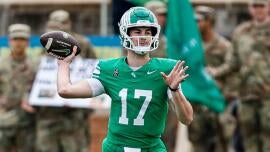
Texas Tech has already demonstrated a willingness to be aggressive in the transfer portal, using resources and NIL opportunities to target impact players at positions of need. Sorsby’s addition signals that the Red Raiders are prepared to continue that approach, blending proven experience with a roster built to compete at the highest level of the conference.
How Sorsby fits with Texas Tech
Sorsby joins a room that includes rising sophomore Will Hammond, who suffered a torn ACL this season. While he could be ready for the start of 2026, Sorsby provides immediate experience and the option for Hammond to gain more experience in a backup role before taking over the reins in 2027.
When Sorsby initially made his decision to enter the transfer portal, there was speculation he could also explore the NFL Draft after a breakout season that put him on the radar as a potential early-round pick. Instead, he appears ready to return to college for a final year, giving him an opportunity to further refine his game and improve his draft stock.
Sorsby will arrive at Texas Tech with three years of starting experience and a track record of production at the Power Four level, though team success has varied. He is 13-17 (.433) as a starter in his career, including a 1-6 mark at Indiana as a redshirt freshman in 2023. After that season, he transferred to Cincinnati ahead of the 2024 campaign and went on to establish himself as one of the Big 12’s more efficient passers across two seasons with the Bearcats.
Sorsby does it with arm, legs
During his time at Cincinnati, Sorsby passed for 5,613 yards and 45 touchdowns, completing 62.9% of his passes. He led the Big 12 in yards per completion (13.5) this season. He showed consistent command of the offense early in the season, including a seven-game stretch without an interception. Sorsby matched a career-low with only five picks in 12 games this season. He earned second-team All-Big 12 honors.
Sorsby also adds value as a runner, becoming more involved in the ground game as his career progressed. He finished this year at Cincinnati with a career-high 580 rushing yards on 100 carries and nine rushing touchdowns, matching his total from the previous season. While Cincinnati closed the year with four straight losses and his passing efficiency dipped late, his overall body of work made him one of the most sought-after quarterbacks in the portal.
NIL
IU football picks up commitment from Wisconsin transfer safety Preston Zachman – The Daily Hoosier

Wisconsin transfer safety Preston Zachman is headed to Indiana according to multiple Sunday reports.
The 6-foot-1 and 212-pound Zachman will be entering his seventh and final season of college football in 2026.
He has played in 35 career games (20 starts, nearly 1,500 snaps), all with Wisconsin, and has 130 tackles and seven interceptions.
Zachman will help fill the void to be left by starters Louis Moore and Devan Boykin.
In 2025 Zachman played in three games and had 12 tackles and two interceptions. He missed the final nine games of 2025 due to a leg injury. Both of the takeaways came in the second half of the season opener against Miami (Ohio). Zachman was named Big Ten defensive player of the week.
Zachman is seeking a medical hardship waiver to play the seventh season in 2026. After only playing three games, he should qualify.
In 2024 he started all 12 games at safety for the Badgers and made a career-high 58 tackles (39 solos), two interceptions, three TFLs and four pass breakups.
In 2023 Zachman played in all 13 games, making five starts. He totaled 49 tackles and two interceptions.
In 2022 Zachman played in six games before missing the rest of the season due to injury. He had 11 tackles and 0.5 TFLs, and grabbed his first career interception in the season opener vs. Illinois State.
In the 2020 season that did not count against eligibility, Zachman played one game. He didn’t play at all in 2021 and took a redshirt season.
Out of Southern Columbia H.S. in Elysburg, Pa., Zachman was a three-star high school recruit by 247 Sports, ESPN and Rivals in the class of 2020.
More transfer portal information:
For complete coverage of IU football recruiting, GO HERE.
The Daily Hoosier –“Where Indiana fans assemble when they’re not at Assembly”
Related
-

 Motorsports3 weeks ago
Motorsports3 weeks agoRoss Brawn to receive Autosport Gold Medal Award at 2026 Autosport Awards, Honouring a Lifetime Shaping Modern F1
-
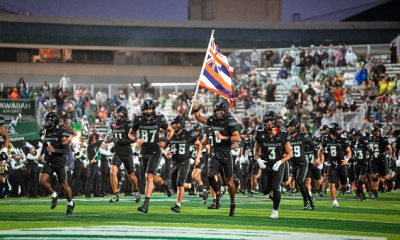
 NIL3 weeks ago
NIL3 weeks agoDowntown Athletic Club of Hawaiʻi gives $300K to Boost the ’Bows NIL fund
-
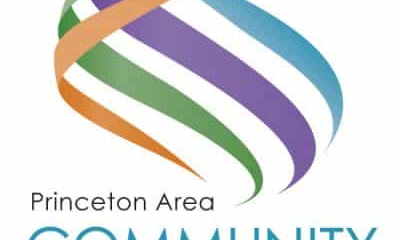
 Rec Sports2 weeks ago
Rec Sports2 weeks agoPrinceton Area Community Foundation awards more than $1.3 million to 40 local nonprofits ⋆ Princeton, NJ local news %
-

 NIL3 weeks ago
NIL3 weeks agoKentucky AD explains NIL, JMI partnership and cap rules
-
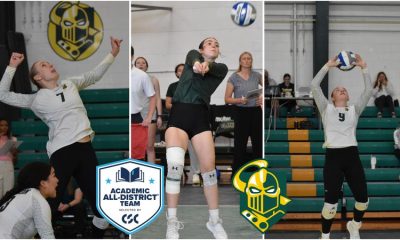
 Sports3 weeks ago
Sports3 weeks agoThree Clarkson Volleyball Players Named to CSC Academic All-District List
-
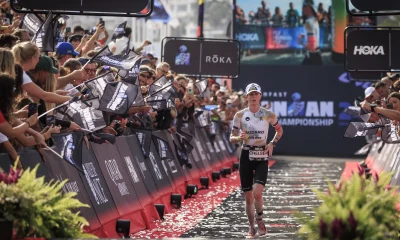
 Sports3 weeks ago
Sports3 weeks agoYoung People Are Driving a Surge in Triathlon Sign-Ups
-

 Sports3 weeks ago
Sports3 weeks agoBeach Volleyball Unveils 2026 Spring Schedule – University of South Carolina Athletics
-
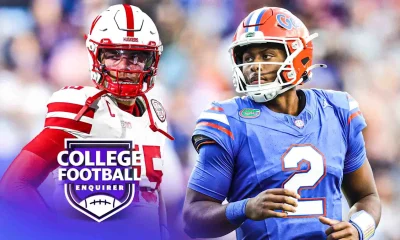
 NIL3 weeks ago
NIL3 weeks agoWhy the NIL era will continue to force more QB transfers
-

 Sports2 weeks ago
Sports2 weeks agoIs women’s volleyball the SEC’s next big sport? How Kentucky, Texas A&M broke through
-
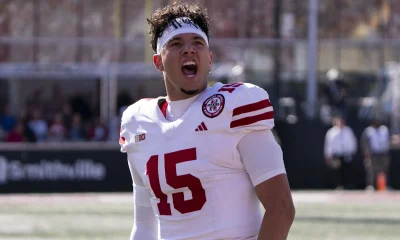
 NIL3 weeks ago
NIL3 weeks agoNew college football program emerges as landing spot for Dylan Raiola

































